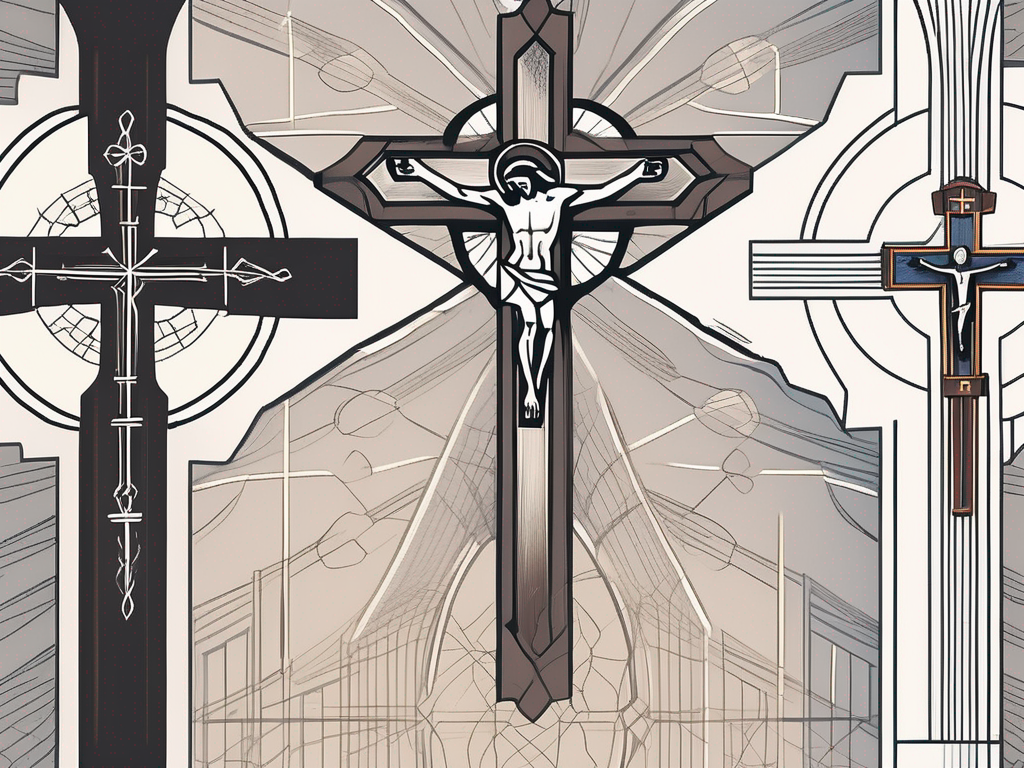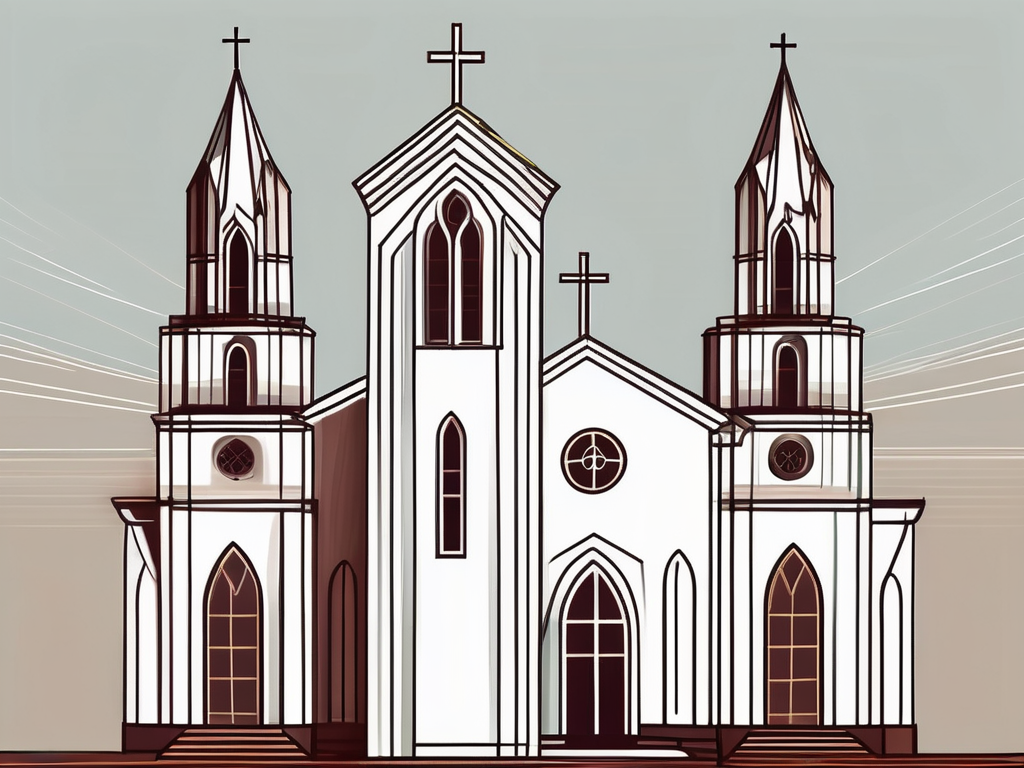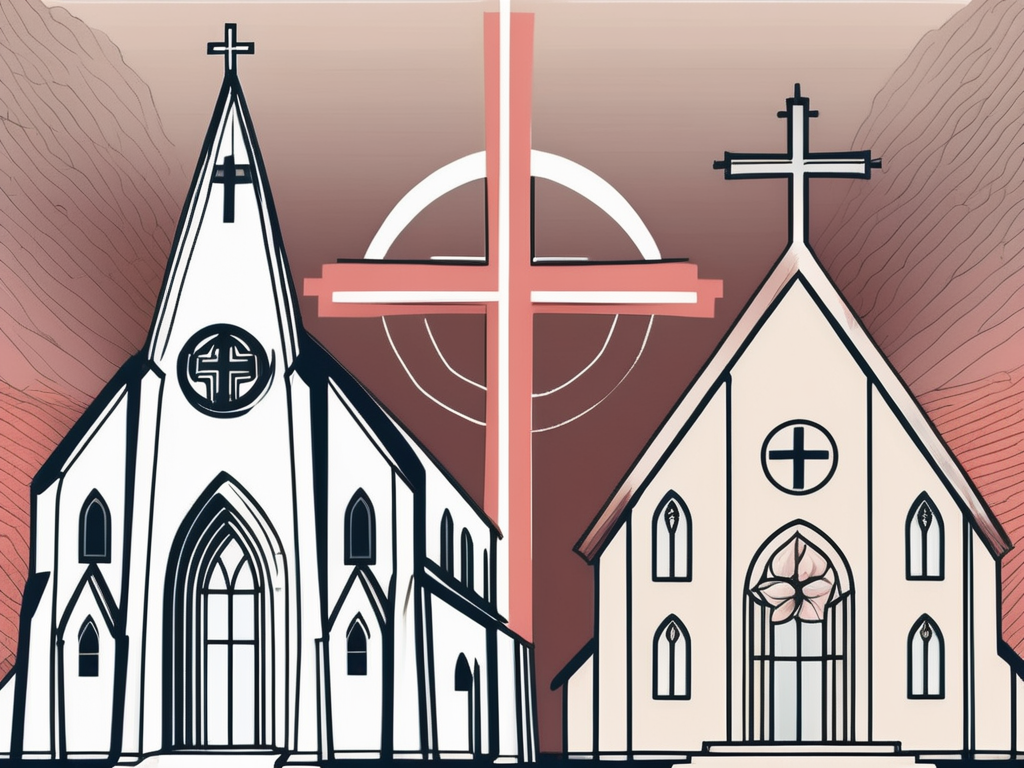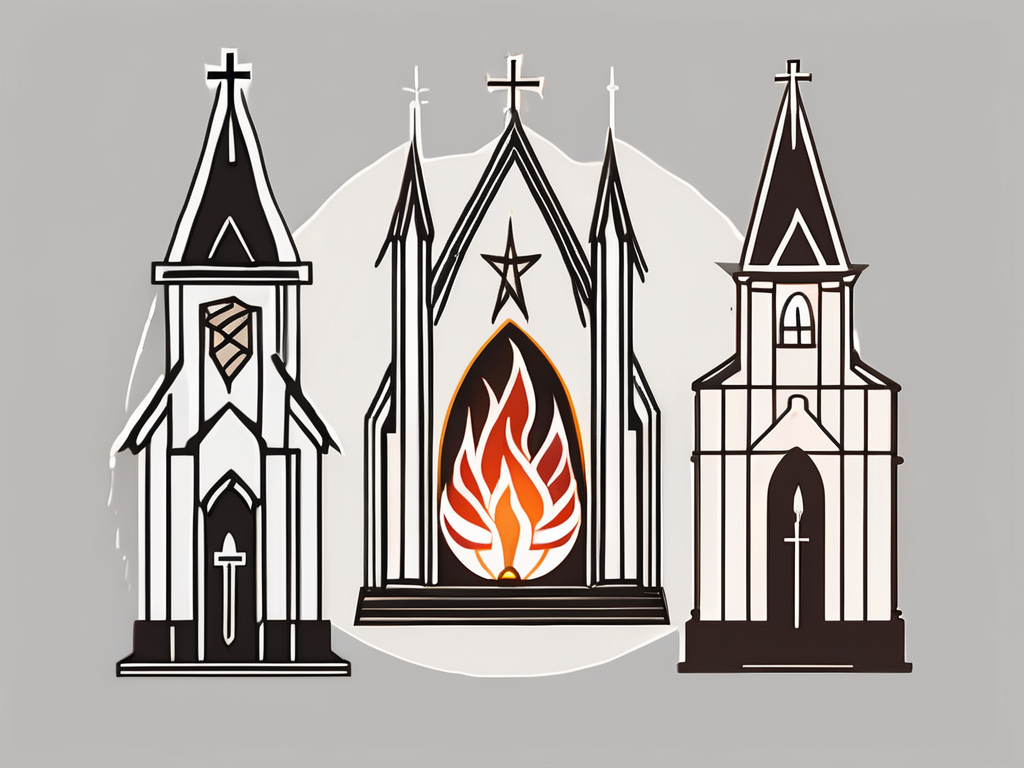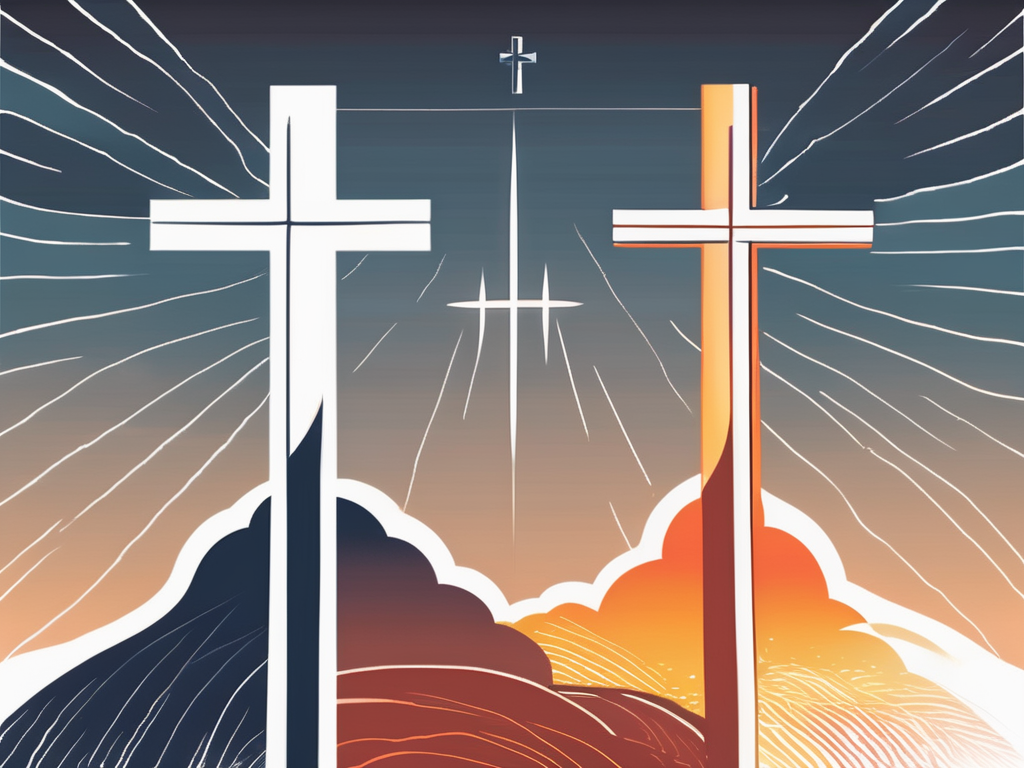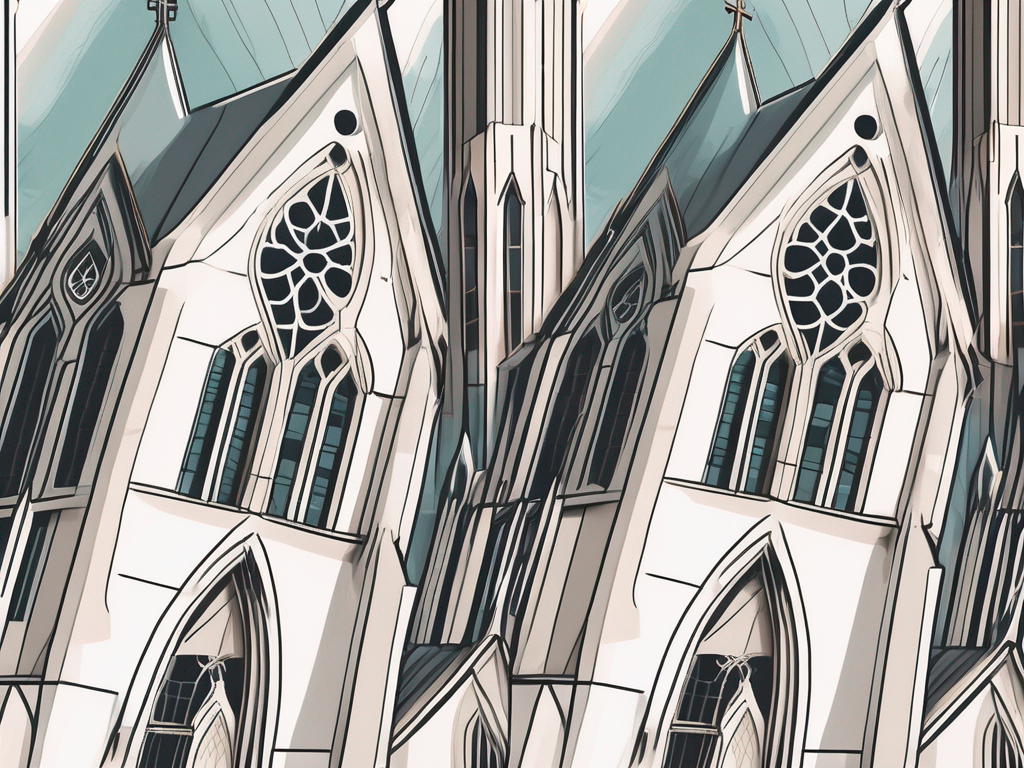Have you ever wondered about the differences and similarities between the Lutheran and Catholic denominations? These two branches of Christianity have a long history and distinct traditions. In this article, we will explore the origins, key beliefs and practices, the role of scripture and tradition, sacraments, and the structure and leadership of both Lutherans and Catholics. Let’s dive in and discover what makes these two faiths unique yet connected!
Exploring the Origins of Lutheranism and Catholicism
The beginnings of Lutheranism can be traced back to the 16th-century Reformation movement led by Martin Luther. Dissatisfied with certain practices and teachings in the Catholic Church, Luther sought to reform the institution and return to what he believed were biblical truths. His efforts resulted in the birth of the Lutheran Church, which emphasized the authority of scripture and salvation through faith alone.
Luther’s journey towards reform began when he became increasingly troubled by the sale of indulgences, which were certificates issued by the Catholic Church that promised the forgiveness of sins. He believed that this practice undermined the true meaning of repentance and faith. In 1517, Luther famously nailed his Ninety-Five Theses to the door of the Castle Church in Wittenberg, Germany, challenging the authority of the Church and sparking a theological debate that would ultimately lead to the formation of Lutheranism.
As Luther’s ideas gained popularity, his followers, known as Lutherans, began to form their own congregations and establish a distinct religious identity. The Lutheran Church emphasized the priesthood of all believers, rejecting the hierarchical structure of the Catholic Church. It also placed a strong emphasis on the vernacular translation of the Bible, making scripture accessible to the common people.
On the other hand, Catholicism finds its origins in the establishment of the early Christian Church. With roots going back to Jesus Christ and the apostles, the Catholic Church has a rich and ancient history. It places importance on the authority of scripture and tradition, as well as the sacraments and the pope as the successor of St. Peter.
The early Christian Church, from which Catholicism emerged, faced numerous challenges and underwent significant transformations. In the first few centuries after the death of Jesus Christ, the Church grappled with questions of doctrine and orthodoxy, leading to the formulation of creeds and the establishment of a hierarchical structure. The Council of Nicaea in 325 AD, for example, played a crucial role in defining the divinity of Jesus Christ and establishing the Nicene Creed, which remains a central statement of faith in Catholicism.
Throughout the Middle Ages, the Catholic Church became a powerful institution, exerting influence over both religious and secular matters. Monastic orders, such as the Benedictines and the Dominicans, played a significant role in preserving knowledge and promoting education. The Church also became a patron of the arts, commissioning magnificent cathedrals, sculptures, and paintings that still inspire awe today.
The sacraments, considered essential for salvation, are an integral part of Catholic worship. Baptism, confirmation, Eucharist, reconciliation, anointing of the sick, holy orders, and matrimony are all sacraments that Catholics believe were instituted by Jesus Christ. These sacraments are seen as channels of God’s grace, bringing believers closer to God and strengthening their faith.
Central to the Catholic Church is the papacy, with the pope regarded as the successor of St. Peter, who was appointed by Jesus Christ as the leader of the apostles. The pope is seen as the visible head of the Church, responsible for preserving and interpreting the teachings of Christ. Throughout history, the papacy has played a crucial role in guiding the Church, resolving disputes, and providing spiritual leadership.
Both Lutheranism and Catholicism have had a profound impact on the religious and cultural landscape of the world. While Lutheranism emerged as a distinct Protestant denomination, Catholicism remains one of the largest Christian traditions, with millions of followers around the globe. The historical context and theological differences between these two branches of Christianity continue to shape the beliefs and practices of their respective adherents.
Key Beliefs and Practices
To understand the differences between Lutheranism and Catholicism, it’s crucial to grasp their fundamental beliefs. Lutherans affirm the doctrine of justification by faith alone, meaning that salvation is received through faith in Jesus Christ rather than through good works alone. This belief stems from Martin Luther’s theological teachings during the Protestant Reformation in the 16th century. Lutherans emphasize that individuals are justified, or made right with God, solely through faith in Jesus Christ’s sacrificial death and resurrection. This doctrine highlights the importance of personal relationship with God and the belief that salvation is a gift of grace.
In addition to justification by faith alone, Lutherans also emphasize the priesthood of all believers. This means that every Christian has direct access to God and does not require an intermediary, such as a priest, to communicate with God. This belief is rooted in the understanding that Jesus Christ is the ultimate high priest and mediator between God and humanity. Lutherans believe that all Christians are called to serve as priests, offering spiritual sacrifices and interceding for others through prayer.
Catholics, on the other hand, believe in the importance of both faith and good works for salvation. They recognize the authority of the pope, considering him as the spiritual head of the Church and the successor of Saint Peter. The pope is believed to have the power of infallibility, meaning that his teachings on matters of faith and morals are considered to be without error. This belief in the papal authority is a distinctive aspect of Catholicism and serves as a unifying force for the global Catholic community.
In addition to the pope, Catholics also give significance to the intercession of saints. They believe that saints, who are individuals recognized for their exceptional holiness and closeness to God, can intercede on behalf of the faithful. Catholics often seek the intercession of saints through prayers and veneration, believing that the saints can pray for them and assist them in their spiritual journey.
Despite these differences, both Lutherans and Catholics embrace the core teachings found in the Nicene Creed, affirming the Trinitarian nature of God and the divinity of Jesus Christ. The Nicene Creed, formulated in the 4th century, is a statement of faith that outlines the central beliefs of Christianity. It affirms the belief in one God who exists in three persons: Father, Son, and Holy Spirit. Both Lutherans and Catholics view the Nicene Creed as a foundational statement of their shared Christian faith.
Overall, while Lutherans and Catholics have distinct beliefs and practices, they both share a commitment to following Jesus Christ and upholding the core teachings of Christianity. Their differences reflect the diverse theological perspectives that have emerged throughout history, but they also provide opportunities for dialogue and understanding among Christians of different traditions.
The Role of Scripture and Tradition
Scripture holds a central position in both Lutheran and Catholic theology. Lutherans affirm the principle of sola scriptura, which asserts that the Bible is the ultimate authority in matters of faith and practice. They believe that scripture should be interpreted within its historical and literary context.
For Lutherans, the study of scripture is a deeply meaningful and personal endeavor. They emphasize the importance of individual believers engaging with the text, seeking to understand its message and applying it to their lives. This emphasis on personal interpretation allows for a diversity of perspectives within the Lutheran tradition, as individuals grapple with the complexities and nuances of biblical teachings.
On the other hand, Catholics recognize the authority of scripture, but also hold tradition in high regard. They believe that the apostolic tradition, passed down through generations, is equally important for understanding God’s will and interpreting scripture.
Within Catholicism, tradition is seen as a vital link to the early Christian community and the teachings of the apostles. It provides a rich tapestry of beliefs, practices, and rituals that have been handed down through centuries. The Catholic Church views tradition as a safeguard against individual interpretation and potential deviations from the true teachings of Christ.
Both faiths find common ground in using scripture as a guide for moral living and spiritual growth, although their approaches to interpretation may differ. Lutherans emphasize the importance of studying the historical and literary context of the Bible to gain a deeper understanding of its meaning. They may consult commentaries, historical documents, and theological works to shed light on the text.
On the other hand, Catholics rely on the interpretive authority of the Magisterium, which consists of the Pope and the College of Bishops. The Magisterium provides official interpretations of scripture and tradition, ensuring a unified understanding within the Catholic Church. This hierarchical structure allows for a consistent and authoritative interpretation of scripture across different cultures and time periods.
Both Lutherans and Catholics engage in theological reflection and dialogue, seeking to deepen their understanding of scripture and tradition. They recognize the importance of community and the guidance of the Holy Spirit in interpreting God’s word. Through prayer, study, and worship, believers in both traditions strive to live out the teachings of scripture and tradition in their daily lives.
Understanding Sacraments in Both Denominations
Sacraments play a significant role in both Lutheran and Catholic worship. Lutherans recognize two sacraments: Holy Baptism and the Eucharist, or Holy Communion. These sacraments are seen as visible signs of God’s grace and means of receiving forgiveness and spiritual nourishment.
In the Lutheran tradition, Holy Baptism is considered the sacrament of initiation into the Christian faith. It is a sacred moment where individuals are cleansed of original sin and welcomed into the community of believers. The water used in baptism symbolizes purification and rebirth, while the words spoken during the ceremony invoke the power of the Holy Spirit.
The Eucharist, or Holy Communion, holds a central place in Lutheran worship. It is a sacrament of thanksgiving and remembrance, where believers partake in the body and blood of Christ through the bread and wine. This act of receiving the sacrament is a tangible way for Lutherans to experience the presence of Christ and to be spiritually nourished.
Catholics, on the other hand, acknowledge seven sacraments, which also include Confirmation, Penance, Anointing of the Sick, Holy Orders, and Matrimony. Each of these sacraments holds a unique significance in the life of a Catholic believer.
Confirmation is a sacrament of initiation, where individuals publicly affirm their faith and receive the Holy Spirit. It is a moment of personal commitment and deepening of one’s relationship with God.
Penance, also known as Reconciliation or Confession, is a sacrament of healing and forgiveness. Through the confession of sins to a priest, Catholics seek absolution and reconciliation with God and the community.
Anointing of the Sick is a sacrament performed for those who are seriously ill or facing a life-threatening situation. It is a moment of prayer and anointing with holy oil, symbolizing God’s healing presence and the hope for physical and spiritual restoration.
Holy Orders is a sacrament through which men are ordained as priests, deacons, or bishops. It is a sacred calling to serve the Church and the faithful, and to administer the other sacraments.
Matrimony, or Holy Matrimony, is a sacrament that unites a man and a woman in a lifelong covenant of love and fidelity. It is a sacred bond that reflects the love and unity between Christ and the Church.
While the number of sacraments differs, both Lutherans and Catholics view them as significant rituals that foster a deeper connection with God and the community of believers. These sacraments serve as visible signs of God’s grace and channels through which believers can experience spiritual blessings and grow in their faith.
The Structure and Leadership
The Lutheran Church is characterized by a congregational structure, with individual churches being largely autonomous. Leadership roles within the Lutheran Church include ordained ministers, known as pastors, who provide spiritual guidance and administer sacraments. The church members often participate in decision-making processes through congregational voting.
Contrastingly, the Catholic Church follows a hierarchical structure led by the Pope, who is considered the successor of Saint Peter and the visible head of the Church. The Pope is assisted by bishops and other clergy members, who oversee various regions and dioceses.
Both structures provide a framework for worship, pastoral care, and organizational functions, albeit with different levels of authority and decision-making power among the clergy and laity.
Conclusion
While Lutherans and Catholics have distinctive practices and beliefs, they share a common ground in their devotion to Jesus Christ. Understanding the key differences and similarities between these two faiths is crucial for fostering respect, dialogue, and unity among Christians. Whether you belong to one of these denominations or are simply curious about their theological differences, we hope this article has provided you with valuable insights into the Lutheran and Catholic traditions. As we journey through our individual paths of faith, let us celebrate our shared devotion to the Lord while respecting the diverse expressions of Christian belief.
